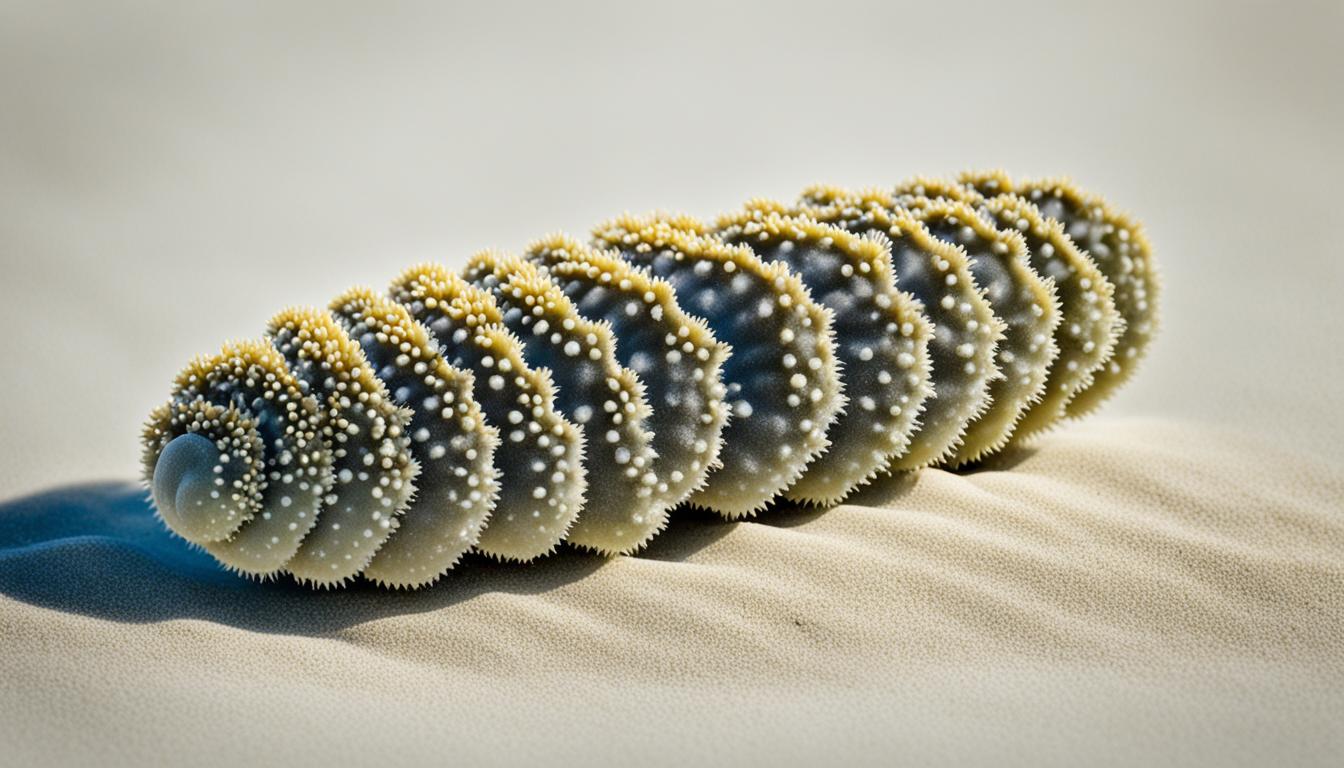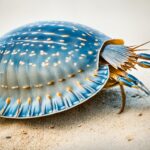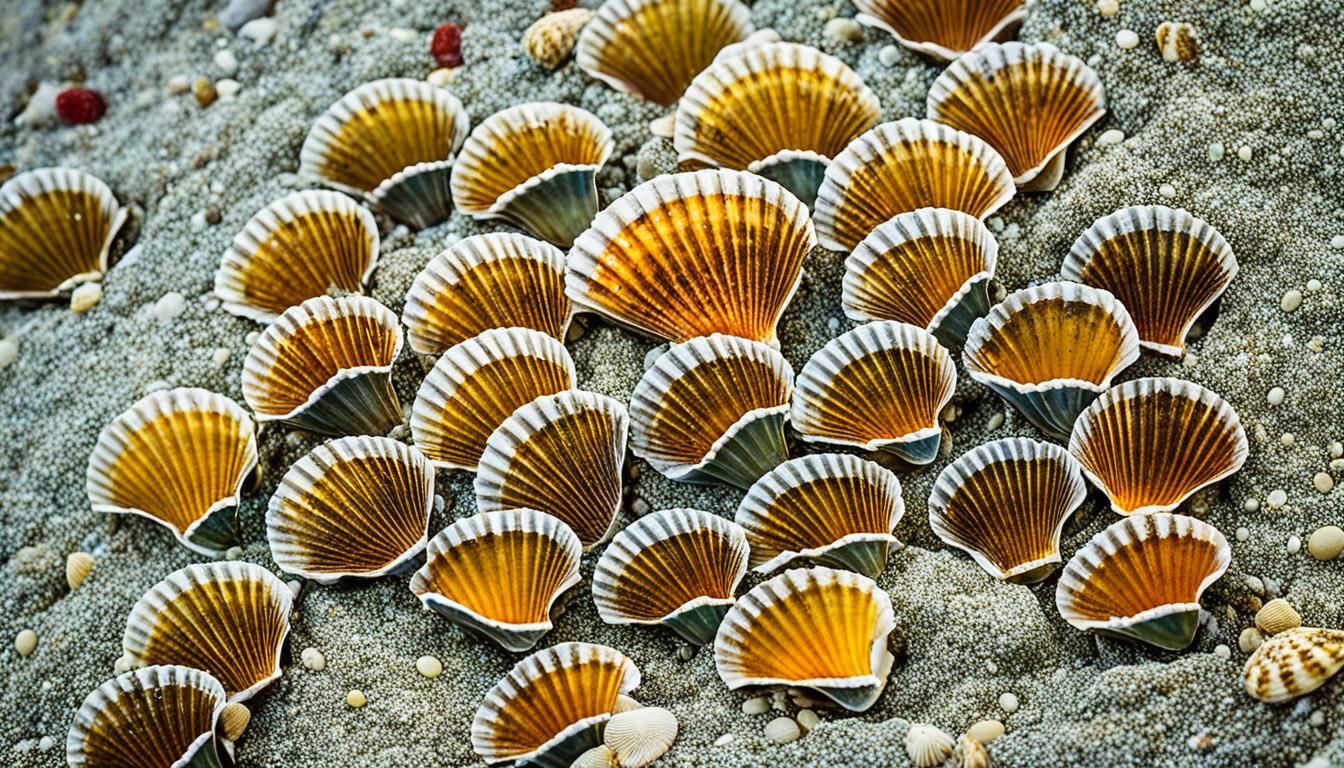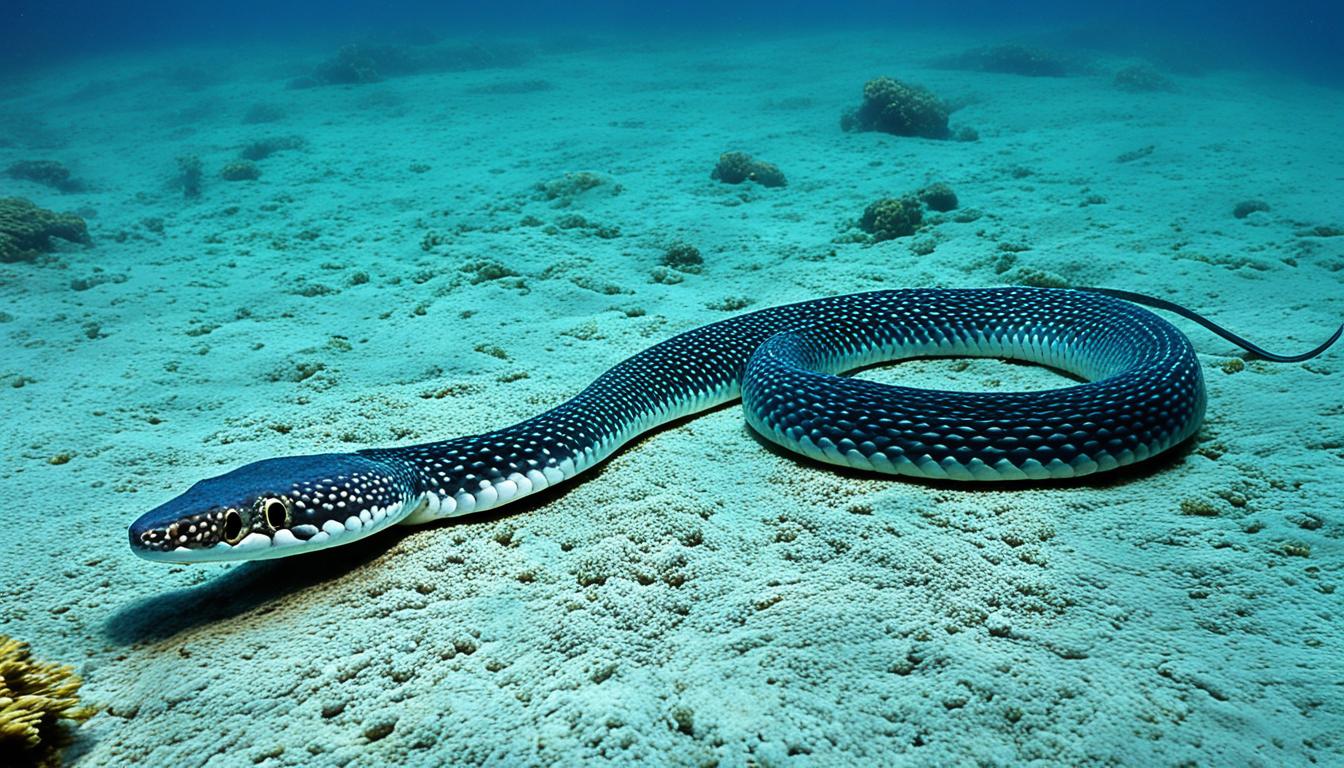Sea cucumbers are fascinating creatures that live on the ocean floor. They are key to keeping marine ecosystems healthy. Let’s dive into how they move and what affects their movement. Learning about sea cucumber movement helps us appreciate these unique animals more.
Introduction to Sea Cucumbers
Sea cucumbers are fascinating creatures that belong to the phylum Echinodermata. This group also includes sea stars and sea urchins. Learning about their classification helps us understand their unique traits and how they evolved.
Classification and Characteristics
Sea cucumbers have many families and genera, showing their diversity. They have a soft, long body without a hard shell. They often have bilateral symmetry, like many marine animals. Most are active at night, eating organic materials on the ocean floor.
This shows their important role in breaking down organic matter in the ocean.
Physical Appearance
Sea cucumbers have unique looks. Their colors range from dark brown to bright red, often with tiny bumps. Some have a leathery feel, while others have bright colors or patterns to hide from predators.
Understanding Sea Cucumber Locomotion
Sea cucumbers have many ways to move that show how well they fit into marine life. They mainly use sea cucumber body contractions and a special water system. This system helps them control their feet, which is key to moving on the sea floor.
Most sea cucumbers move by crawling on the surface. They use their feet to grip the ground as they go. Their movement is like a caterpillar’s, where they can shrink and grow their bodies to fit through tight spots. Some can even swim, making them more flexible in how they move.
Sea cucumbers use their unique ways of moving for more than just getting around. It helps them find food and stay safe from predators. They show how well their body and biology work together to adapt to their world.
How do sea cucumbers move?
Sea cucumbers move in a unique way under water. They use special muscles and body movements to get around. This lets them crawl and change shape to fit their surroundings.
Muscle Contractions and Body Movements
Sea cucumbers are quite agile thanks to their muscle contractions. These contractions help change their shape and angle. This makes it easier for them to crawl.
Their tube feet also play a big part in their movement. These feet work with hydraulic pressure. When the pressure goes up, the feet extend and lift the body. When the pressure drops, they pull back, helping the sea cucumber move.
This process shows how muscles and hydraulic systems work together. It’s a key part of how sea cucumbers move.
Mechanisms of Movement: Tube Feet
Sea cucumbers move in unique ways, thanks to their tube feet. These parts are key for moving on the ocean floor and grabbing food. Let’s dive into how their structure and hydraulic system work to understand their movement.
Structure and Function of Tube Feet
Sea cucumbers have small, flexible tube feet on their underside. They do many important jobs, like:
- Locomotion along the substrate
- Grasping surfaces while feeding
- Aiding in navigation through their environment
These feet are especially strong under the body. They help the sea cucumber move better, making crawling easier.
Hydraulic Control of Tube Feet
The tube feet work with a special hydraulic system. This system lets the sea cucumber control pressure in the feet. By changing pressure, the sea cucumber can move and stay stable on different surfaces.
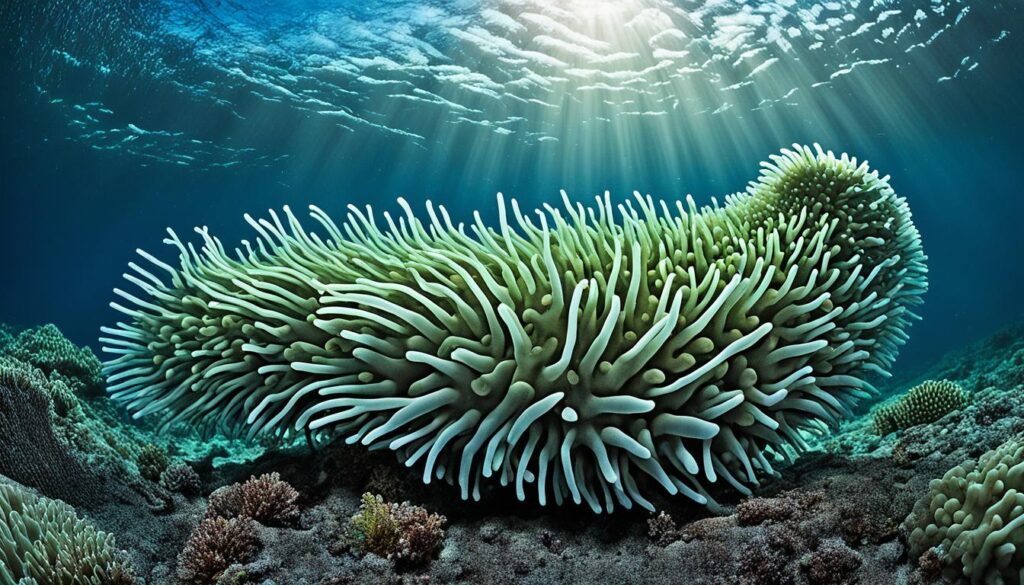
Sea Cucumber Crawling Behavior
Sea cucumbers move like caterpillars, using their tube feet to walk on the seafloor. They contract and extend their bodies to move and keep their grip on the ground. This way, they can move around easily.
They are very adaptable and can move through different ocean areas. Sea cucumbers also hide in the sand to avoid predators. This shows how they use both movement and hiding to survive.
Learning how sea cucumbers move helps us understand their role in the ocean. Their way of moving and adapting helps them survive and interact with other sea creatures.
| Characteristic | Crawling Behavior | Predatory Defense |
|---|---|---|
| Method of Movement | Utilizes tube feet with body contractions | Camouflage and burying in sediment |
| Terrain Adaptability | Seamlessly transitions between substrates | Employs behavioral tactics for evasion |
| Energy Efficiency | Low energy consumption during movement | Minimizes risk exposure through hiding |
Environmental Factors Influencing Movement
Many environmental factors affect how sea cucumbers move. These include the type of ground they live on, the water pressure, and the risk of being eaten. They like living in soft-bottom areas where they can easily dig or hide from danger.
Water flow and salt levels change how well they move. These changes affect their water vascular system. Being able to adjust to these changes helps them move better, showing how important environmental factors are for their movement.
Sea cucumbers live on the ocean floor and help with nutrient cycling. Knowing how they move and what affects them helps us understand their role in the ocean.
| Environmental Factor | Impact on Movement |
|---|---|
| Substrate Type | Affects burrowing ability; soft substrates increase mobility. |
| Water Pressure | Influences body fluid dynamics, impacting movement efficiency. |
| Predation Risk | Determines movement strategies, leading to more cautious behavior. |
| Water Current | Can hinder or aid movement, depending on its strength and direction. |
| Salinity Levels | Affects the osmotic balance, influencing their overall swimming or crawling efficiency. |
Unique Adaptations for Movement
Sea cucumbers have amazing ways to move through the ocean. These special moves help them find food and avoid danger. They are key to their survival.
Collagen Properties
Sea cucumbers are mostly made of collagen. This stuff makes them super flexible. It lets them change their body shape to fit through tight spots.
When they need to, they can make their bodies less dense. This helps them slide through small openings. But, if they feel threatened, they can stiffen up. This makes them hard to get past.
Regenerative Abilities
Sea cucumbers can also regrow lost body parts. This is really useful for them. If they lose an arm or a piece of skin, they can grow it back.
This ability helps them stay mobile and strong. It shows how well they can adapt to tough environments.
Conclusion: The Importance of Sea Cucumber Movement
Learning about sea cucumber movement is key. It helps us understand how they live and their role in the ocean. They move in ways that help break down organic matter, which is vital for the ocean’s health.
Sea cucumbers also play a big role in keeping their homes diverse. By mixing the ocean floor, they make nutrients available to many sea creatures. This shows how important their movement is for the ocean’s balance.
Every time you see a sea cucumber move, you’re seeing a key process that keeps the ocean healthy. This movement is a reminder of the complex life in our oceans. It shows us why we need to protect these creatures and their homes.
By valuing sea cucumbers, we help keep the ocean’s balance for the future. This is crucial for the well-being of our oceans and all the life in them.

